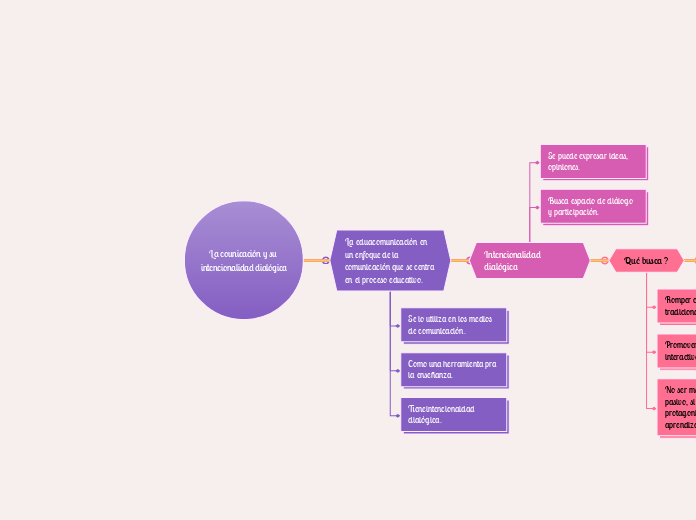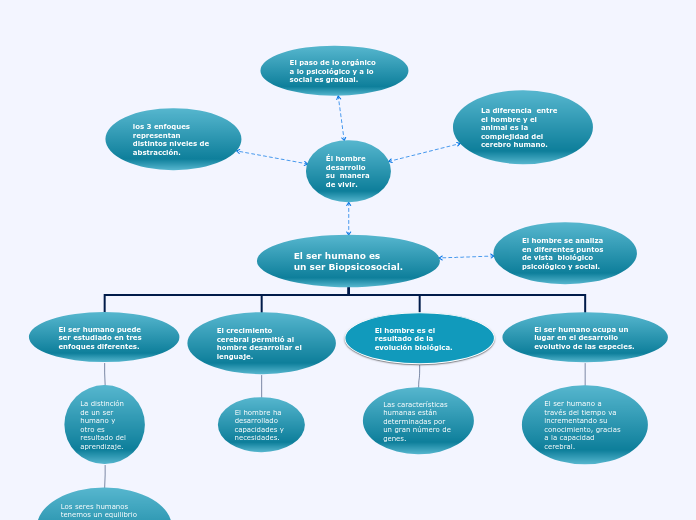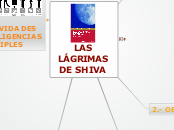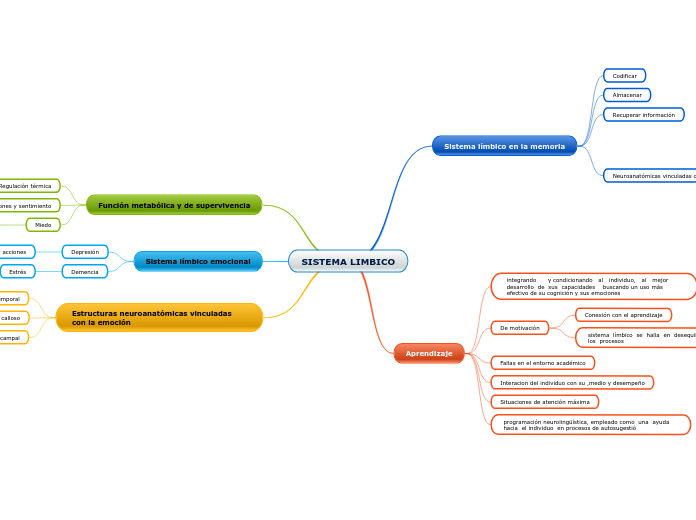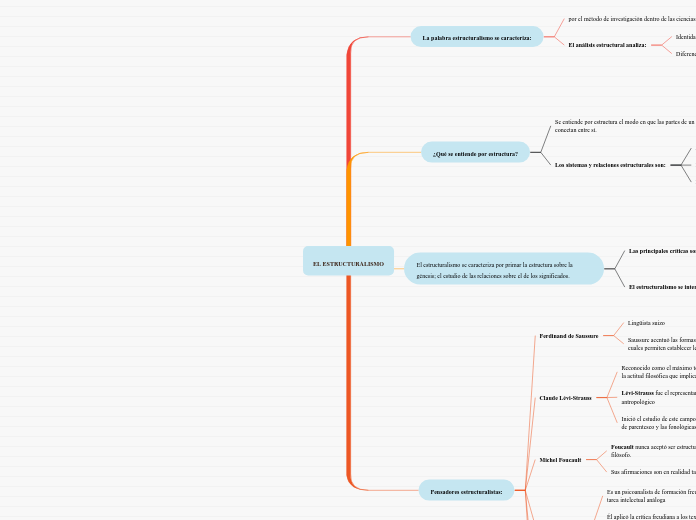La counicación y su intencionalidad dialógica
Start your book report by typing in the Title and Author of the book you are presenting!
https://www.redalyc.org/pdf/356/35614569006.pdf
http://portal.amelica.org/ameli/journal/665/6653727005/html/
https://comunidadesdeaprendizaje.net/presentacion/aprendizaje-dialogico/#:~:text=El%20aprendizaje%20dial%C3%B3gico%20es%20el,las%20interacciones%20con%20otras%20personas.
https://www.revistacomunicar.com/html/67/es/67-2021-09.html
https://www.rededucom.org/los-precursores/paulo-freire-es.htm#:~:text=Paulo%20Freire%20afirmaba%20que%20en,y%20al%20proceso%20econ%C3%B3mico%2Dpol%C3%ADtico.
Bibliografía
Resumen
La educomunicación co la intencionalidad dialógica busca transformas la educación, permitiendo que los estudiantes se conviertan en sujetos activos y criterios en producción fomentando el desarrollo de los cuidadanos informados, reflexivos y participativos em la sociedad actual.
To understand the work, we must understand its origin. Type in the details of the book you are studying.
In this category, you can also include things like what is the recommended audience for the book, biographic details about the author, or bibliographic details about the book.
Guillermo Orozco Gómez
Finally, use this topic to write down your personal opinion of the book!
- Did you enjoy it?
- What worked for the story and what didn't?
- Why?
Destaca la necesidad de los estudiantes en la prodección y consumo de mensajes mediáticos.
Aborda la relación entre eduación y medios de comunicación.
Jesús Martín-Barbero
Writing can be categorized into four primary categories: expository, descriptive, persuasive, and narrative.
Each of these writing styles has a particular function.
More than one writing style may be present in a single work.
- What are the main types of writing you noticed in this book?
El diálogo y la reflxión crítica son fundaentales.
An author who uses a descriptive writing style gives their readers a mental picture of a person, place, or thing.
The author may use metaphor or other literary strategies to express their feelings through their five senses.
- Are there any particular descriptive scenes that captured your attention?
Su enfoque destaca la importancia de la comunicación como proceso interactivo y participativo.
When an author writes in a narrative style, they are attempting to tell a story with people, conflict, and places, rather than simply conveying facts.
- What are some of the tell-tales of the narrative style you've noticed in this book?
Paulo Freire
Different types of narrative elements, such as themes, motifs, and symbols, contribute to a story's overall impact.
- What are the main themes of this book?
- Can you identify its symbols and motifs?
Desarrolló el concepto de educomunicación dialógico en su obra ¨Pedagogía del Oprimido¨
Consider symbols to be motifs with the recurrence removed.
When we think of an object that symbolizes a concept, we speak about symbols.
Unlike motifs, symbols only need to appear once to have an effect.
Similar to motifs, symbols are physical things that are nonetheless related to themes.
Aboga pr un enfoque educativo para fomentar la perticipación activa de los estudiantes.
A motif is a concrete object that recurs frequently throughout a text (typically physical objects, although it might also be sounds, places, activities, circumstances, or words). This recurrence of motifs gives a text structure by connecting different parts of the narrative to or around a primary image. Motifs frequently relate to a theme, therefore they can act as a reminder of the significance of that theme.
Trata de promover el diálogo como medio para la cronstrucción conjunta del conocimiento.
A theme is a concept or a topic that an author wants to delve deep into.
Themes are recurring ideas that pop up throughout a piece of writing rather than specific, recognizable concrete imagery.
Autores y teóricos que han abordado la educomunicación y su intencionalidad dialógica.
The voice used to tell a story is known as the narrative voice, also known as 'Point of View'.
This is provided by the person(s) telling the story from their perspective.
It is a crucial tool and element in the work. If the author uses a variety of narrative voices and perspectives, readers will view and understand a story differently.
Qué implica?
Keep track of the most important points in the story using the topics above.
You can use the notes to give a short summary of these events.
La apertura de espacios de comunicación horizontal.
The resolution of the story involves tying up the loose ends of the climax and falling action.
In the resolution, the writer continues their thoughts on the story’s themes, and gives the reader something to think about after the last word is read.
Valorar la diversidad de voces
The author examines what happens after the climax in the falling action.
- Do new conflicts consequently develop?
- How does the story's climax make a statement about its main themes?
- How do the characters respond to the climax's permanent changes?
The falling action must move the story toward some sort of resolution and begin tying up loose ends from the primary conflict, while also exploring bigger ideas and themes.
Promover el respeto y la escucha activa
The struggle reaches its height in the story's climax, and we find out what happens to the key characters.
Consider the climax as the 'turning' point in the narrative, when the main struggle is addressed decisively.
Creación de entornos de aprendizaje
The conflict of the plot is explored in the rising action. In this section of the story, things frequently 'become worse': a bad choice is made, the antagonist causes the protagonist harm, additional characters complicate the storyline further, etc.
The reader frequently learns important details of the past, and usually finds a deeper knowledge of the characters' motivations, the setting, and the ideas being addressed as the conflict develops.
Desarollo de habilidades de pensamiento crítico.
The exposition generally introduces the key fictional components, such as the plot, characters, and writing style.
Building the environment in which the conflict of the story takes place is the focus of the exposition.
Qué busca ?
The characters in a book are what drives the plot forward.
It is important to note the significance of a character and their action to the overall story.
- What are the main means of characterisation the author uses?
Use the topics below to write more information about the characters in the book!
No ser meroreceptor pasivo, si no que sean protagonistas de su aprendizaje.
- Are there any significant episodic characters?
- How does encountering them change the main and secondary characters?
- How do they drive the book forward?
Promover un enfoque interactivo y participativo.
- Who are the secondary characters of the book?
- Are there any foils for the main characters amongst them?
- What do they bring to the story?
Romper con la concepción tradicional de la eduación.
- Who are the main characters?
- Are they flat or round?
- Do they have justifications for their actions?
- What are their motivations?
Use the notes to write more details about the characterisation!
Intencionalidad dialógica
A book can span galaxies or single rooms. It can traverse through the past, present, and future, or can take place in a single day.
Type in the time and place of the action above.
Busca espacio de diálogo y participación.
- Where does the action take place?
- Is it a geographical location in the real world?
- Is it a fantasy country or continent?
- Is it another planet?
Se puede expresar ideas, opiniones.
- When do the events of the book take place?
- Are there specific time references?
- Does the book span multiple days, months, or years?
Use the notes to write down the time references you find!
La eduacomunicación en un enfoque de la comunicación que se centra en el proceso educativo.
To understand the work, we must understand its origin. Type in the details of the book you are studying.
In this category, you can also include things like: the recommended audience for the book, biographic details about the author, or bibliographic details about the book.
Tieneintencionaidad dialógica.
Identifying the genre of a literary work is essential to understanding it's scope, themes, and point of view.
Write down the genre of the book you are studying here.
Como una herramienta pra la enseñanza.
It is important to understand the time in which a work of literature was written to understand the language and 'identity' of the book.
Type in the original year of publication of the book you are studying.
Se lo utiliza en los medios de comunicación.
Literary Currents, also known as Literary Trends, determine the common characteristics of different works written in a certain period of time.
Among these characteristics, we count style, themes, aesthetics and ideologies.
What literary current does this work fit into?
